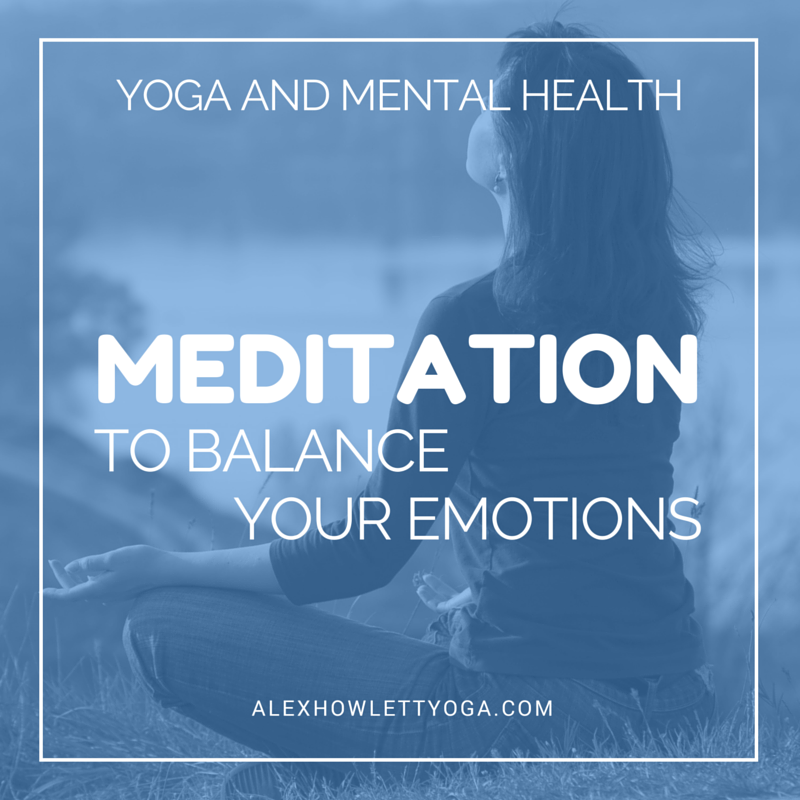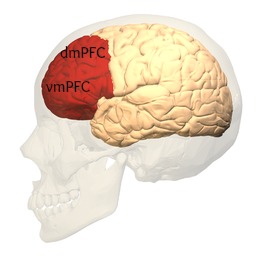Yoga and Mental Health Series
My journey to becoming a yoga teacher was largely influenced by my struggles with mental health and recovery through yoga. For this series of blog posts, I’m writing within the topic of mental health. Living with anxiety and depression since childhood and post traumatic stress disorder in my early 20s, I understand how lonely, confusing, and all-around difficult life can be when you’re dealing with mental health issues. If you are struggling with your mental health, I want you to know that you are not alone, and if life got easier for me, it can for you, too. I want to show you how it’s possible and teach you some of the tools and techniques that I found helpful.
Missed a previous post? Read part 1 here and part 2 here.
5 Types of Meditation to Balance Your Emotions
 Years ago I was convinced that I couldn’t meditate. I just couldn’t understand how it was done and thought that maybe it only worked for some people and I wasn’t one of them. I thought meditation meant I had to sit for minutes at a time with my eyes closed and not have a single thought. “How is that even possible?” I wondered.
Years ago I was convinced that I couldn’t meditate. I just couldn’t understand how it was done and thought that maybe it only worked for some people and I wasn’t one of them. I thought meditation meant I had to sit for minutes at a time with my eyes closed and not have a single thought. “How is that even possible?” I wondered.
Being an anxious person, my mind is always jumping from one thought to the next. Often the racing thoughts are multiplied at times when I close my eyes and try to relax, like when I’m lying in bed at night. Pesky thoughts keep me awake, like all the things I said and did wrong throughout the day, whom I may have offended or my unwritten to-do list for tomorrow.
Needless to say, I never thought I would be teaching guided meditation classes someday. When I was in yoga teacher training, one of my homework assignments was to share a guided visualization with my class – a form of meditation. I don’t remember what exactly I said in the visualization that I shared, but I remember the imagery was about a walk through the forest. I created a relaxing scene: the soft ground below, the deep greens of the surrounding pine trees and ferns, the bright greens of the moss, the rough brown bark, the woodsy scent of the air, the sound of the soft breeze and the birds chirping, the sunlight dancing on the ground below, creating patterns as it shone through the branches.
My teacher liked the guided imagery and asked if I would be willing to teach a guided meditation class. So at the end of my training, she put me on the schedule for a weekly class during which I would teach a short sequence of yoga postures followed by mindful breathing, progressive relaxation and guided imagery. Sometimes there was a specific purpose for the visualization – releasing stored up emotions, chakra balancing, stress relief, healing, etc. – other times it was just for relaxation and restoration.
Meditation is one of the most effective ways we can learn to control our thoughts for self development, healing from trauma, improving our self-esteem or balancing our emotional well-being. But if you don’t know where to start, the thought of meditating can be overwhelming or unappealing. So, I want to share with you how meditation works, plus a few (of the many, many) methods of meditation to get you started or add to your current practice.
How does meditation work to balance our emotions?
During meditation you are reprogramming your brain to achieve a certain outcome. The medial prefrontal cortex of your brain is sometimes known as the “me center,” because it plays a role in your personality expression, decision making, self reflection and social interactions. The ventromedial prefontal cortex (vmPFC) is linked to emotional functions and can amplify worry/anxious thoughts or depressive thoughts and feelings when it is overactive. The dorsomedial prefrontal cortex (dmPFC) is involved in feeling empathy and maintaining social connections.

When you meditate regularly, the strong connection between your vmPFC and your bodily sensation/fear centers begins to break down. When that connection breaks down, you are able to ignore sensations of anxiety more easily and can choose not to allow anxious thoughts to take over.
Meditation also strengthens the connection between your dmPFC and your bodily sensation center, improving your ability to understand people who think differently than you. This increased empathy allows you to more readily think about where a person is coming from when they behave unlike you, rather than becoming quickly upset or angry.
People who meditate long-term also show increased gray matter density in their brains compared to those who do not meditate, resulting in more positive emotions, maintaining emotional stability over time and increased mindfulness.
Guided meditation
Guided meditation, the method I briefly described above, is a meditation led by a guide, either in person, through written text, or through a video or audio recording. Guided meditations don’t always follow the same format, but often the instructor will prompt you to lie down or sit in a comfortable position, close your eyes and focus on your breath. Then he or she may lead you through some progressive relaxation, which is focusing on one area of your body at a time, relaxing that area completely and moving on to the next area of the body until you are relaxed throughout the entire body. Once you’re in relaxation mode, the teacher or guide will likely lead you through a series of visualizations to form a mental image or focus on certain emotions, to reach a specific goal. At the end of the meditation, you’ll gradually be led back to your normal state of awareness.
Positive Affirmation Meditation
Affirmations are short statements that help you gain conscious control of your thoughts and create your new reality. “I am” statements are powerful choices. The key is to repeat your affirmation to yourself as if what you want to experience in your life has already happened. i.e. Instead of saying “I am learning to have more self confidence,” a more positive choice would be, “I love and accept who I am today.”
Some other examples of affirmations are:
- I feel happy, I feel healthy, I feel great.
- I am so happy and grateful that _____________ (fill in the blank).
- I am wealthy and prosperous.
- I give and receive love freely.
- I am stronger than any obstacles that come my way.
To practice positive affirmation meditation, select one or more affirmations that speak to you. If none of the above resonate with you, create your own. Repeat your chosen affirmation(s) to yourself while in a relaxed state for at least 5 minutes in the morning and 5 minutes before bed.
6 Phase Meditation
The 6 phase meditation model (video) was designed by Mindvalley Founder, Vishen Lakhiani. The model is based on meditating on the 6 needs that he believes we all have:
- Love and compassion/Connection
- Gratitude
- Making peace with others/Forgiveness
- Vision for your future
- Daily intention
- Support/Blessing
Lakhiani teaches this guided meditation around the world and accredits this daily practice to his success.
Mindfulness Meditation
You can practice mindfulness meditation by sitting comfortably in an upright posture and focus your eyes softly on something in front of you. Just sit, aware of your environment, and bring your mind back to your body and surroundings as you notice it wondering. Then take some time notice your breath as it enters and leaves your body, not trying to change it or breathe in any specific way, just aware. Lastly, focus your attention on your thoughts and observe them without judgement. Just let your thoughts come and go without reacting to them. If you feel your mind escaping so much that you forget about your surroundings, simply bring your attention back to your breath.
Mindfulness meditation is meant to help you learn to be at peace with the present moment, no matter what arises throughout your day. Instead of trying to escape negative experiences, you learn how to accept them.
Moving Meditations
If sitting with you thoughts doesn’t sound at all appealing, maybe you’d prefer trying a moving meditation. Some types of moving meditation include yoga (check out my free videos), qigong (video) and tai chi (video). Walking can also be a form of moving meditation. In walking meditation, you move slowly and continuously while focusing your awareness on your body, all of the different sensations you experience as your body moves and your feet contact the earth, and then focusing your awareness on the thoughts, feelings and emotions that arise as you walk. Some people find it easier to focus their awareness on their bodies while moving rather than sitting still.
Whatever type of meditation you choose, for best results in maintaining your emotional well-being, it’s a good idea to practice daily. Just a few minutes each day is all you need to start seeing results. I hope you found this breakdown helpful for beginning your meditation practice or learning about a new method of meditation you would like to add to your existing practice.
If you’d like to receive my free guided meditation recording for releasing negative thoughts, please enter your email below.
References:
Disclaimer: The yoga therapy components of my teaching are based on my personal life experiences with mental illness and study of relevant subjects, and are not derived from my status as a RYT with Yoga Alliance Registry.